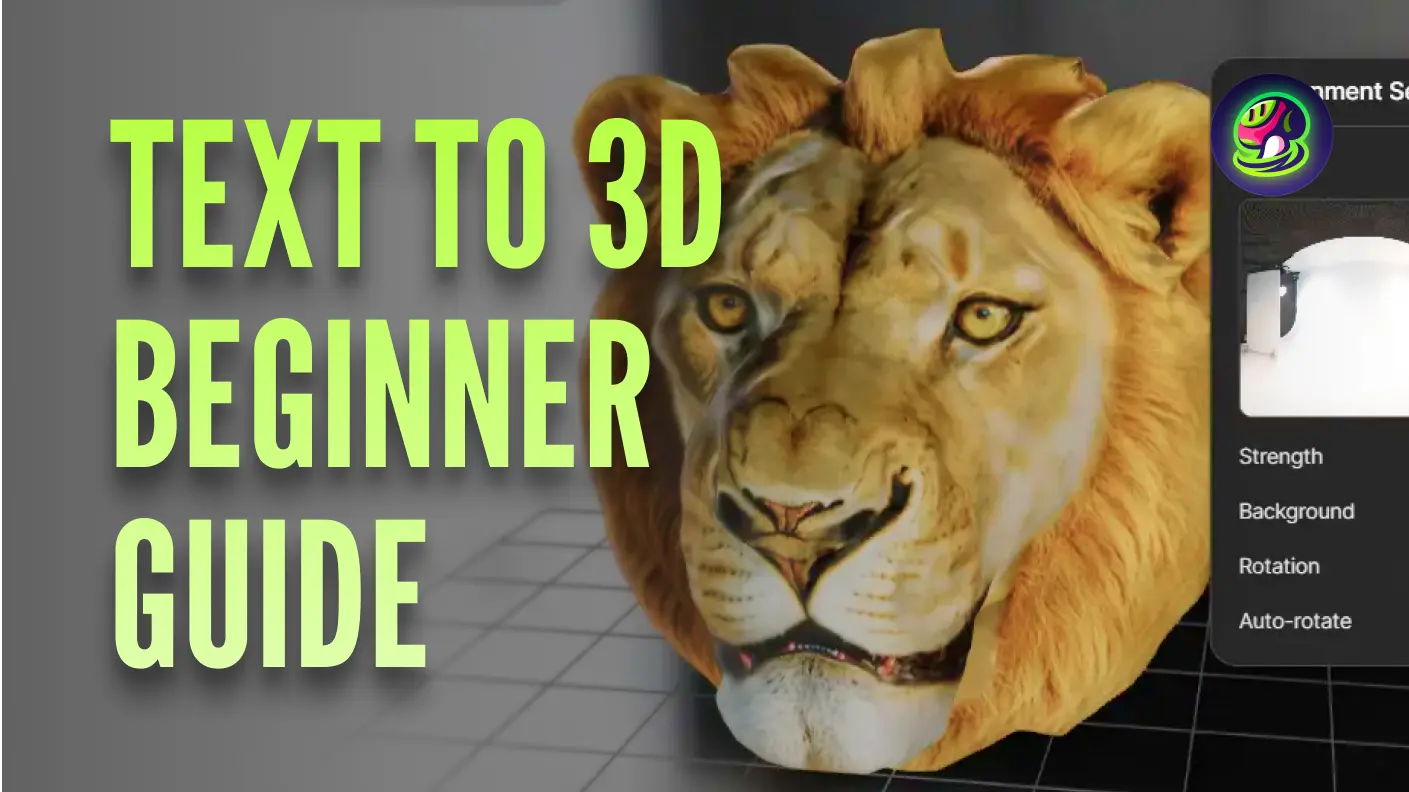How Sivan Okcu Builds Better Avatars for Second Life with Meshy
Meet Sivan Okcu, a longtime 3D character modeller who's been building in Second Life since 2007. Over the years, his avatar designs have become more than just a creative outlet—they've turned into a full-time business that gives him complete freedom, without relying on clients or companies. Today, Sivan is using Meshy to take his workflow to the next level, unlocking faster production and greater creative flexibility.
![]()
About Sivan Okcu's Project: Second Life Business
Sivan has been part of the Second Life economy for over 15 years, designing avatars, outfits, and accessories for users across the platform. What started as a passion project soon became a career—and thanks to his digital products, he's been able to work independently full-time, without needing freelance gigs or studio jobs.
Recently, he launched a new brand focused on custom mesh avatars—3D characters that players can wear or use as NPCs in their own virtual worlds. His customers range from longtime SL residents to new users looking to upgrade from the platform's default avatars. And because nearly every SL user wants better-looking characters at some point, his audience includes almost the entire community.
Today, his avatar line includes two main styles: realistic male characters, and more stylized or fantastical designs—many of which wouldn't have been possible without Meshy. With Meshy, he's been able to rapidly explore new concepts, build faster, and push creative boundaries that were previously out of reach.
"I've been making avatars since before mesh was even supported in Second Life. Back then, we were just using textures on default avatars. But when mesh uploads were introduced in 2010, everything changed. Suddenly, creating high-quality characters required advanced skills, months of work, and high costs."
Sivan Okcu
3D Character Modeller/Generative AI Enthusiast
Meshy changed that. Now, Sivan can generate unique, high-quality avatars in minutes. This speed allows him to lower prices without sacrificing quality, encouraging customers to purchase multiple avatars in one visit.
![]()
Faster Creation, Smarter Sales—The Shift to Online
The business side of Second Life has also evolved. While in-world shopping has slowed down, Sivan's online sales through the Second Life Marketplace have exploded, thanks to the platform's effective paid promotion system.
A decade ago, people frequently visited in-world stores, but customer habits have changed significantly. Now, most prefer buying products through the online Marketplace instead. Second Life's Marketplace is powerful—paid listings help products surface more easily. As Sivan puts it, “If I spend 2 on advertising, I get 10 back.”
That kind of return allows him to spend more time creating and less time marketing.
So Much Work, So Much Risk—Before Meshy
Creating avatars was never easy. It involved long hours of modeling and rigging, and a lot of trial and error to figure out what would sell. As a Maya user, Sivan was comfortable with 3D modeling—but rigging for SL was especially painful and unpredictable.
"If customers didn't like the final product, all that effort was wasted,” he says. “I even learned Blender just to use a Mixamo rig plugin for SL compatibility."
Sivan Okcu
3D Character Modeller/Generative AI Enthusiast
Once Meshy entered the picture, that all changed. Now he can quickly prototype a wide variety of avatars and get immediate feedback from the market. That insight has helped him uncover surprising demand for things like ape avatars, muscular elderly men, and fantasy characters like aliens and female bodybuilders.
![]()
How Sivan Supercharged His Second Life Workflow with Meshy
Sivan integrates Meshy into his Second Life content pipeline in a flexible and creative way. For most of his creations, he starts with Meshy's Text to 3D feature to quickly generate base models. Sometimes, he also uses reference images created with other AI tools and feeds them into Meshy's Image to 3D pipeline for more tailored results.
"I can use my own 3D models, but texturing was a big deal before Meshy. Now, I've built a workflow that boosts both quality and efficiency. After generating a character, I take snapshots from different angles, enhance them with Krea AI, and bring them into ZBrush. I smooth the mesh and repaint it using enhanced images. That gives me much sharper, more polished textures."
Sivan Okcu
3D Character Modeller/Generative AI Enthusiast
Sivan uses Meshy for both prototyping and final production. “If I'm creating avatars, Meshy gets me to a finished product fast,” he explains. “But when I'm building structures, I treat those outputs more like concept pieces to refine later.”
Sivan on Discovering Meshy—and Why It Works So Well on Mobile
When asked about the first time he used Meshy, Sivan had this to say:
"During the recent year I've focused the AI tools. That gave me thousands of new people in my network in _[_LinkedIn_](https://www.linkedin.com/in/sivan-okcu-01232914a/)_. When you have a nice network which many people focus on the same things as you, that is the best way to learn new AI tools quickly. I've learned Meshy in LinkedIn posts."
Sivan Okcu
3D Character Modeller/Generative AI Enthusiast
Sivan also sees big potential in how Meshy fits into Second Life's mobile future. As the platform begins rolling out mobile access, performance becomes a challenge—traditional mesh models can break or lose detail on low-power devices. But Meshy's clean, stylized models are better optimized for both mobile and desktop platforms.
"When I heard Second Life was going mobile, I started thinking about how Meshy avatars might be a better fit,” Sivan explains. “Turns out, they look great on both platforms—and that flexibility is going to matter more and more."
Sivan Okcu
3D Character Modeller/Generative AI Enthusiast
Sivan first learned about the upcoming mobile version some time ago, and immediately recognized its limitations compared to the PC version. “You can't expect the same level of rendering on a mobile app,” he says. “The best PC avatars look different—sometimes even broken—on mobile.” But Meshy's output, with its simplified structure and efficient geometry, turned out to be a perfect match. “The complexity of traditional SL mesh avatars doesn't translate well to mobile. But Meshy avatars? They hold up beautifully.”
Looking ahead, Sivan believes this optimization could be a game changer. “The mobile app will be more widely used in the near future,” he predicts. “People will start to notice the difference between models built for high-end PCs and those designed to work well everywhere. Meshy strikes that balance.”
![]()
Final Thoughts: When Meshy Becomes Part of the World It Creates
Sivan believes that AI tools like Meshy are just getting started. As mesh and texture quality continue to improve, creators will be able to design even more detailed and complex assets with less effort. He also imagines a future where platforms like Second Life integrate AI tools directly into their world—so you can create assets in real-time, without ever leaving the virtual space.
"I used to find accessory creation kind of boring. But now, with Meshy, I actually enjoy it. It's made the process faster and more fun, and I've been able to make more unique designs than ever."
Sivan Okcu
3D Character Modeller/Generative AI Enthusiast
As virtual platforms evolve, creators like Sivan are leading the way—using Meshy to bring bold ideas to life, and helping shape the next generation of digital worlds.


